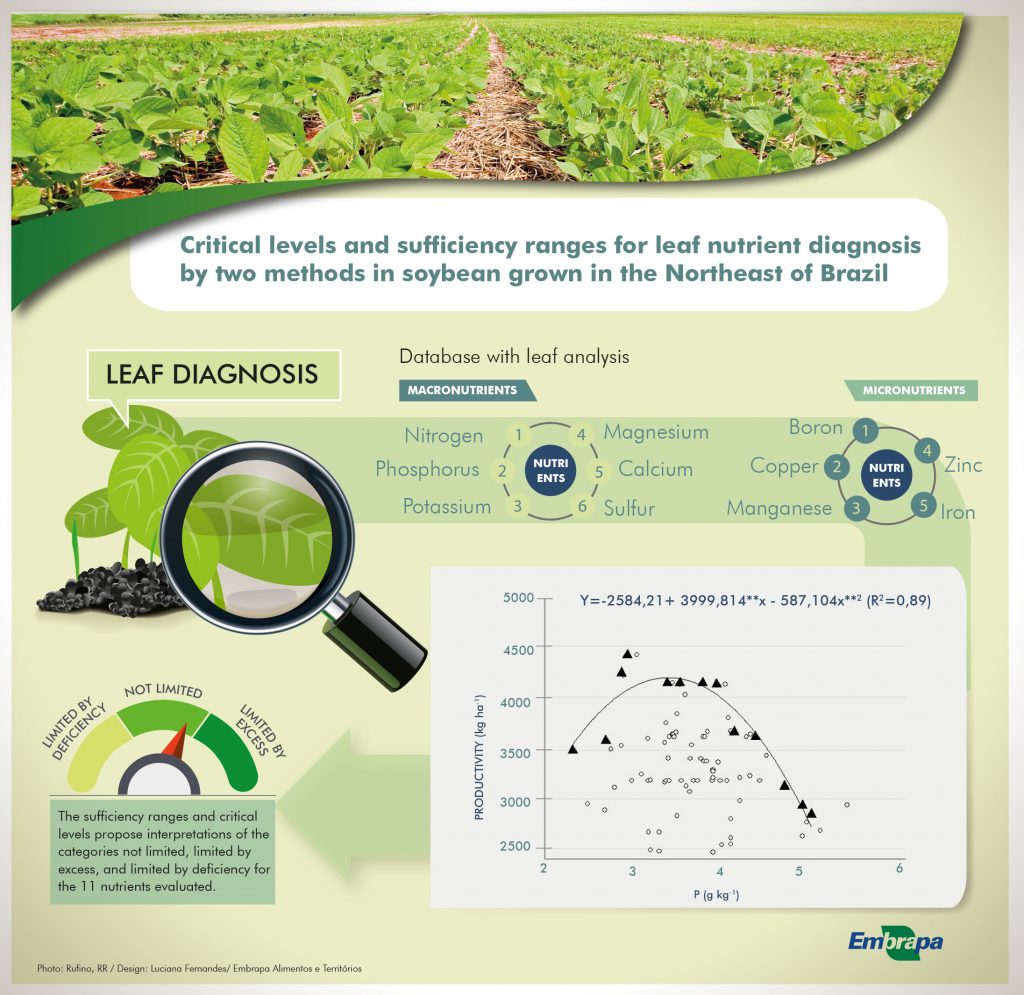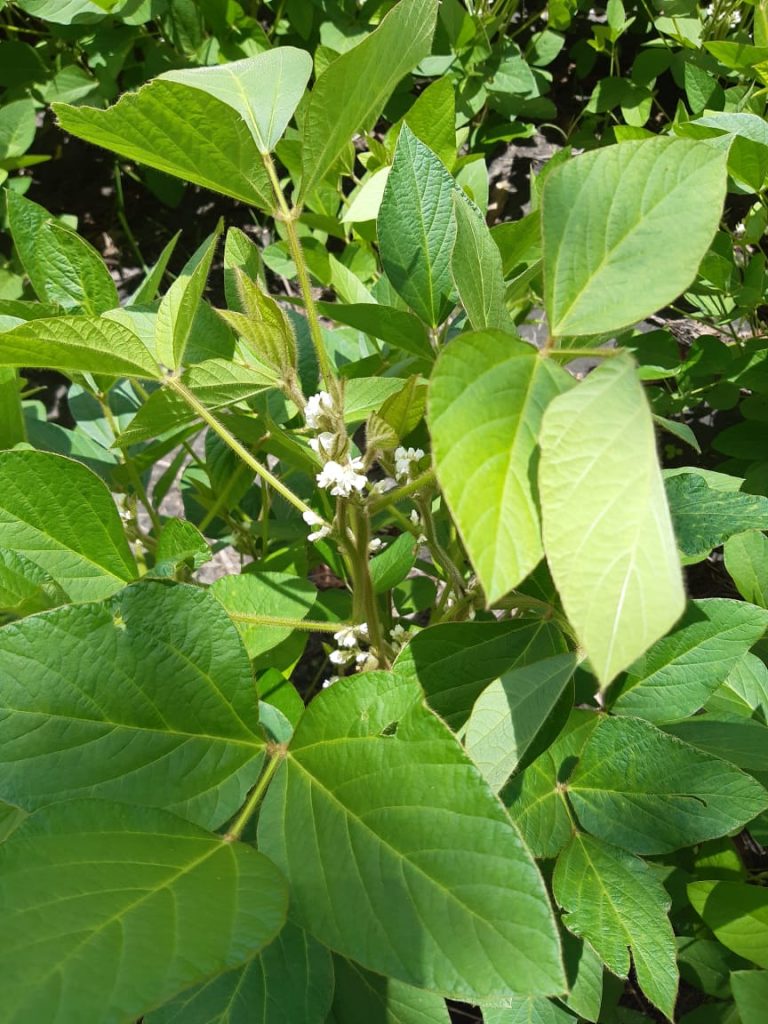Rev. Bras. Ciênc. Solo.2020;44:e0190125.
Critical levels and sufficiency ranges for leaf nutrient diagnosis by two methods in soybean grown in the Northeast of Brazil
20/Jul/2020
DOI: 10.36783/18069657rbcs20190125
Graphical Abstract

Highlights
Sufficiency ranges of nutrients are proposed for leaf diagnosis of soybean plants grown in the northern Northeast region in Brazil.
Critical levelsof nutrients are proposed for leaf diagnosis of soybean plants grown in the northern Northeast region in Brazil.
The sufficiency range of nutrients proposed is different than those for other Brazilian soybean producing regions.
ABSTRACT
Establishing sufficiency ranges and critical levels of nutrients are important for a correct evaluation of plant nutrition through leaf diagnosis. This study aimed to propose critical levels and sufficiency ranges of macro and micronutrients based on leaf diagnosis of soybean plants. The database used was generated from 86 samples of the third trifoliate leaf without petiole, collected during the flowering stage from soybean plants of the main cultivars used in the states of Piauí and Maranhão, Northeast region of Brazil. The results of macro and micronutrients and grain yield were used to calculate the critical level by the reduced normal distribution and boundary line methods, the latter was also used to generate the sufficiency ranges. Nutrient levels for 90 % maximum grain yield were considered for the critical level by the reduced normal distribution, and nutrient levels at the upper line of a dispersion diagram were considered for the boundary line method, using the relation between grain yield and nutrient concentration to generate sufficiency ranges for 95 and 99 % maximum grain yields. The critical levels generated by the boundary line method presented a larger number of deficient samples than the reduced normal distribution method, except for boron. The sufficiency ranges generated by the boundary line with 95 % of the maximum grain yield could not diagnose nutrient deficiency, except for copper. The critical levels by the reduced normal distribution and boundary line methods for leaf diagnosis of soybean were 40.2 and 42.1 g kg-1, 3.2 and 3.4 g kg-1, 17.6 and 19.5 g kg-1, 8.7 and 10.3 g kg-1, 4.7 and 4.9 g kg-1, 2.1 and 2.4 g kg-1, 44 and 44 mg kg-1, 5 and 12 mg kg-1, 125 and 145 mg kg-1, 33 and 34 mg kg-1, and 48 and 63 mg kg-1 for N, P, K, Ca, Mg, S, B, Cu, Fe, Mn, and Zn, respectively. The critical levels by boundary line showed better distribution for leaf diagnosis for excess, deficiency, and adequate nutrient levels. The sufficiency ranges by the boundary line method for N, P, K, Ca, Mg, S, B, Cu, Fe, Mn, and Zn were 38.6-45.7 g kg-1, 3.1-3.7 g kg-1, 18.3-20.7 g kg-1, 9.4-11.3 g kg-1, 4.4-5.3 g kg-1, 2.1-2.7 g kg-1, 35-53 mg kg-1, 10-14 mg kg-1, 131-159 mg kg-1, 23-46 mg kg-1, and 58-68 mg kg-1, respectively. The reduced normal distribution and boundary line methods allowed the generation of critical levels and sufficiency ranges for leaf diagnosis of soybean. The sufficiency range generated by the boundary line with 95 % maximum grain yield showed no prevalence of diagnosis of nutrient deficiency, except for copper.
726

